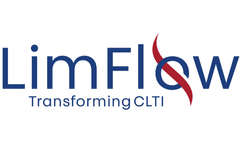Refine by
Vascular Surgery Articles & Analysis
12 articles found
A recent study led by Decan Jiang and colleagues from RWTH Aachen and Heidelberg University Hospitals in Germany has shed light on how porcine models are helping surgical training—particularly in the complex field of kidney transplantation. Pigs are anatomically and physiologically close to humans, making them ideal candidates for surgical training. Practicing renal ...
In a particularly noteworthy case, the use of marker bands in vascular surgery enabled exceptionally accurate graft placements, resulting in shorter recovery periods and a decrease in complication rates. ...
They occur most often while in hospital after surgery, during long-haul flights and during and in the six months after pregnancy, mainly due to inactivity. ...
All rights reserved.) KEY WORDS: Vascular trauma; vascular conduit; trauma surgery. Vascular injury is a significant contributor to loss of life and limb in the civilian and military setting.1 The incidence of vascular trauma in combat has increased from a rate of 2% to 3% during the Vietnam War to more than ...
Objective: Patients with end stage renal failure who require haemodialysis suffer morbidity and mortality due to vascular access. Bioengineered human acellular vessels (HAVs) may provide a haemodialysis access option with fewer complications than other grafts. ...
The Amplifi Vein Dilation System (Artio Medical) is is an innovative device designed to dilate arm veins in preparation for AVF surgery using rapid, non-pulsatile venous blood flow. Surendra Shenoy, M.D. (a vascular surgeon with specialist interest in vascular access and transplantation at Washington University School of Medicine, St Louis, ...
The endovascular reintervention rate for the status quo cohort was thus obtained from that study’s subgroup of 70 patients classified in the highest stage of threatened-limb severity (CS4) according to the Society for Vascular Surgery’s lower extremity threatened limb classification system.10 A scenario with no reintervention events in the status quo ...
What interested you in LimFlow, and how did you get involved in the PROMISE I trial? Dr. Clair: Practicing vascular surgery, where a number of patients are evaluated for chronic limb-threatening ischemia (CLTI), you are guaranteed to have patients who are not candidates for percutaneous or surgical revascularization. ...
MOTION study will quantify new technology’s impact on radiation exposure In December, Cleveland Clinic vascular surgeons successfully completed the first surgical case in the MOTION clinical trial of a new non-radiation-based surgical navigation platform for endovascular aortic interventions. The trial is a feasibility study of the Intra-Operative Positioning System (IOPS™) from ...
A 4-STEP FLOWCHART FOR SELECTING NO-OPTION CLTI PATIENTS FOR pDVA According to the Global Vascular Guidelines, all evidence-based revascularization in patients with CLTI must be managed considering patient risk, limb severity, and anatomic patterns of disease.1 pDVA is not an exception, and Figure 1 shows the 4-step flowchart for deciding whether a patient is or is not a ...
It can be used in conjunction with other auxiliary therapies to treats medical conditions that include: Skin and soft tissues diseases: Thermal burns, chemical burns, radiation burns Frostbite Scalds Skin infections (erysipelas, pyoderma, actinomycosis, aspergillosis, Gram negative bacteria infections, nosocomial infections) Dry skin Cutaneous ulceration (caused by vein insufficiency , ...
Cardio-vascular diseases are the number one killer in the world. As an alternative to common treatment methods the installation of specific-purpose stents into the damaged blood vessel could be used in order to minimise fatal outcomes. ...









